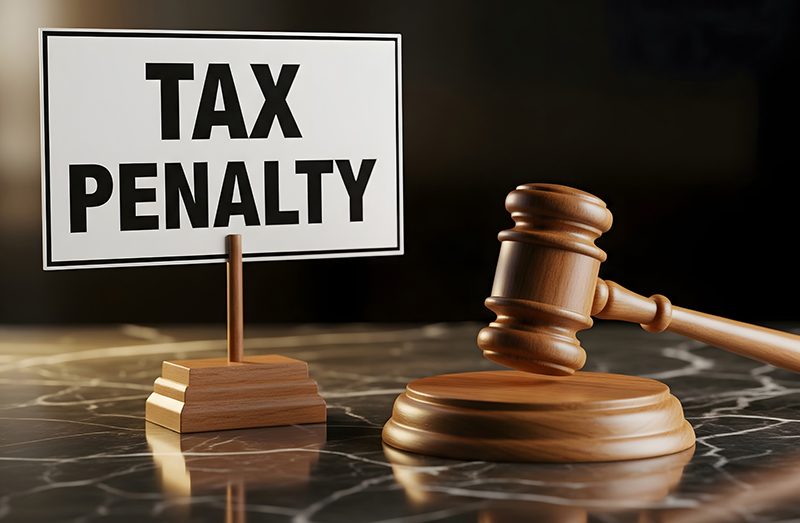Montana Estimated Tax Payments | What You Need To Know
September, 19 2024 by Steve Banner, EA, MBA
“What I need to know? Why would I need to know anything about estimated taxes in Montana?” I wouldn’t blame you if this was your immediate reaction to reading the title of this article. But if you have received any income from Montana, or plan to do so in the future, then we recommend that you read this article carefully. Unless you enjoy paying interest and penalties, that is.
It is not our intention to cause you undue alarm, so please allow me to explain what we mean by the term “estimated taxes.”
It all comes back to the fact that both the United States Internal Revenue Service (IRS) and state tax agencies expect to receive tax payments from you each year based on how much income you earned or received during that period. Therefore, the Montana Department of Revenue (MDOR) also expects you to pay tax on the portion of your income that relates to the state. Most of us never have to think about any of this because our federal and state taxes are withheld from our paycheck before we receive it. This “pay-as-you-go” withholding process takes place for us wage and salary earners regardless of whether we get paid every week, every two weeks, or every month. When it comes around to tax return time after the end of the year, we report our taxable income and figure out our correct tax liability for the last year. While we’re preparing our tax returns, we compare the tax liability we’ve just figured out to the total amount that has been withheld by our employers during the year. We then find out right away whether we will receive a refund or whether we owe further amounts to the IRS or the MDOR. In other words, we find out if we’re due for a refund because our employer withheld too much for tax, or if we have a balance due because the employer withheld too little.
So far, so good, we might think. But what happens if we receive income that we are supposed to pay tax on, but no tax was withheld? This situation affects a lot of people, such as self-employed business owners, independent contractors, and freelancers who do not normally have taxes withheld from the payments they receive for their work. It also applies to many other individuals because taxes are usually not withheld for taxpayers who receive other types of income, such as rental income, dividend income, capital gains, pensions, interest income, and even income from cryptocurrency and lotteries. Although no tax was paid when the taxpayers received this income, the taxing authorities want their share. And the only way that taxes can be paid during the course of the year on these types of income is if the taxpayers themselves take the responsibility by making payments of what is known as “estimated” taxes.
Let’s use an example to explain how the estimated tax system works. Wendy works as a salesclerk and owns two condominiums that she inherited from her mother in the city. She rents the condos year-round and receives a steady flow of rental income from them. Although she has taxes withheld from her paycheck, she also needs to make regular payments of estimated taxes for and/or from her rental income. After the end of the year, she calculates her federal and state tax liabilities, comparing these amounts to the total of taxes she has paid during the year, resulting in either a refund or balance due.
Many individual states require the payment of estimated taxes by people like Wendy, although the rules tend to differ slightly from one state to the next. Let’s now look at the rules that apply to Wendy for her situation in Montana.
Montana Estimated Tax Rules for Residents and Nonresidents
Estimated tax payments must be made when the amount of annual estimated taxes owed by a Montana taxpayer – after any withholding and nonrefundable credits – is more than $500. This applies to all individuals, regardless of whether they are residents, nonresidents, or part-year residents. Exceptions apply to taxpayers who:
- Were not required to file a Montana tax return in the prior year; or
- Had a tax liability of zero in the prior year; or
- Are retired and were at least 62 years old at the end of the prior tax year (this applies only in the year the taxpayer retired and the following year); or
- Became disabled in either the prior or current tax year; or
- Derived at least two-thirds of their gross income from farming and ranching operations.
Estimated tax payments of Montana tax must be made in four installments, due on the following dates, unless the date falls on a weekend or holiday. In that case, the payment will be due on the next business day:
- April 15th;
- June 15th;
- September 15th; and
- January 15th of the following year.
Taxpayers who use a fiscal year for accounting purposes should adjust the above dates accordingly, and thus their due dates for payment will be the 15th day of the 4th, 6th, 9th month of their fiscal year, as well as the 15th day of the first month of their next fiscal year.
Calculating Estimated Tax Payment Amounts
Montana DOR Publication 1 contains the worksheets ESA and ESW which allow taxpayers to calculate the amount of their estimated tax payments for the current year. Worksheet ESA is designed for taxpayers who expect their income to vary during the year. On the other hand, worksheet ESW would be used by taxpayers, such as Wendy from our earlier example, who expect their income to be relatively stable throughout the year.
Penalties and Interest
Taxpayers may be subject to late payment penalties and interest if they do not make their quarterly estimated tax payments in full by the due date. Interest can also be assessed if the total of the taxpayer’s withholding and estimated tax payments for the current year is:
- Less than 90% of the tax liability for the current year; or
- At least 100% of the tax liability for the year before.
Payment Methods
Payments may be made by either of the following methods:
- By mail with a check or money order after printing a Montana Individual Income Tax Payment Voucher, Form IIT.
- Online by credit card, an electronic check (ACH debit), or other electronic options at the Montana.gov TransAction Portal.
For more information on Montana Estimated Taxes, please refer to Publication 1 Guide to Montana Tax Withholding and Estimated Tax Payments and Worksheets.





